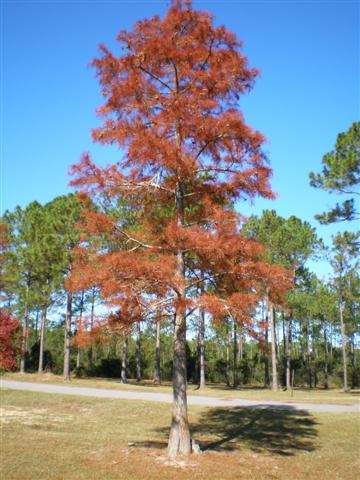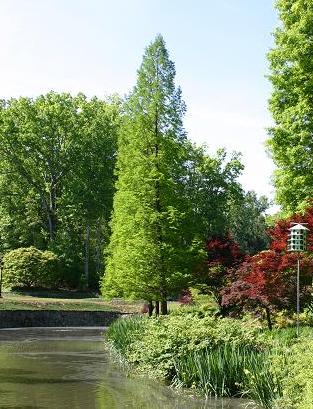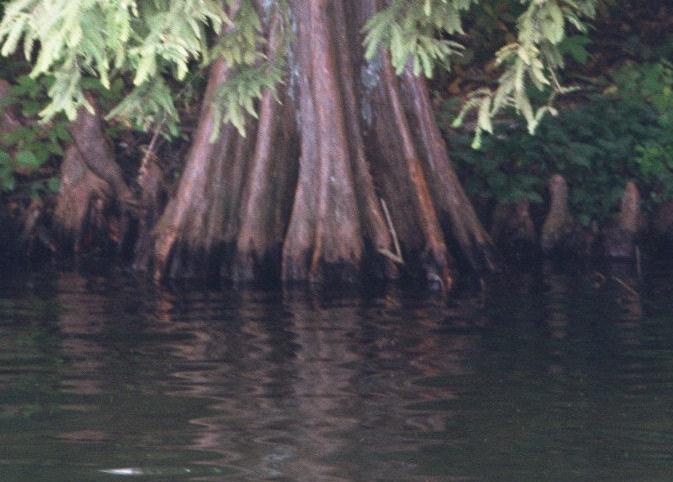
Or help "drought-scaping?"
Check out our Design Services.
We're also offering a 10% discount
for November & December Appointments
| Bald Cypress |
| Taxodium distichum |

|
Need design help? Or help "drought-scaping?" Check out our Design Services. We're also offering a 10% discount for November & December Appointments |

|
Although they are naturally found in swamps and bogs
along the southern coasts and in wetlands near the Mississippi River, their ability to adapt to a wide range of soil conditions
also makes them an easy-to-grow landscaping choice. I often see these trees used in commercial settings where their shape,
adaptability and fast growth have made them very popular. In good growing conditions, these trees can grow as much as 3 feet per
year when young.
Bald cypresses have another unique characteristic. Even though they are conifers, they are deciduous in that they lose their needles in the fall. The needles which are only 1/3 to 3/4 of an inch long turn an orange-red before dropping. Because the needles are so small, raking is usually not required. Once the needles have dropped, the attractive cinnamon-colored peeling bark gives the trees good winter interest. As they age, the trunks develop deep furrows. |

|
In wet soils as pictured here, bald cypresses develop woody cone-shaped growths from the roots that are called "knees." These knees (pneumatophores) help the trees to obtain oxygen in saturated soils. Knees do not commonly develop in average or dry soils. |